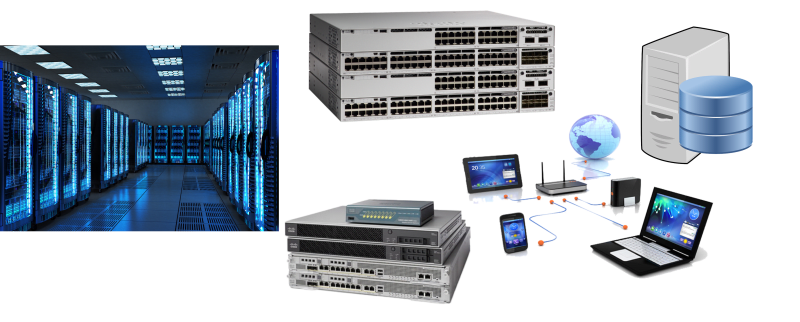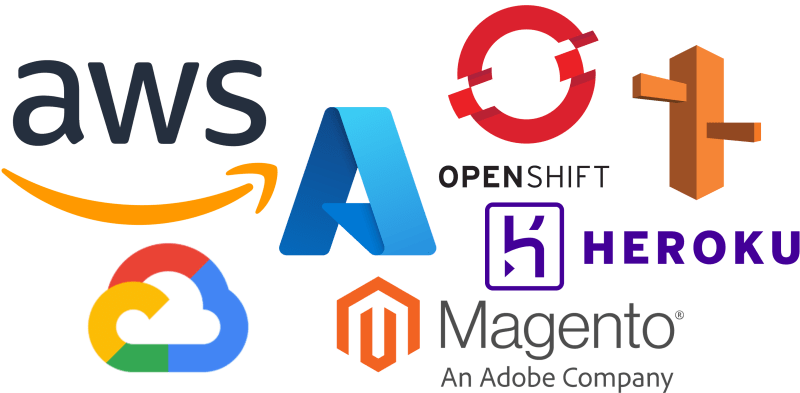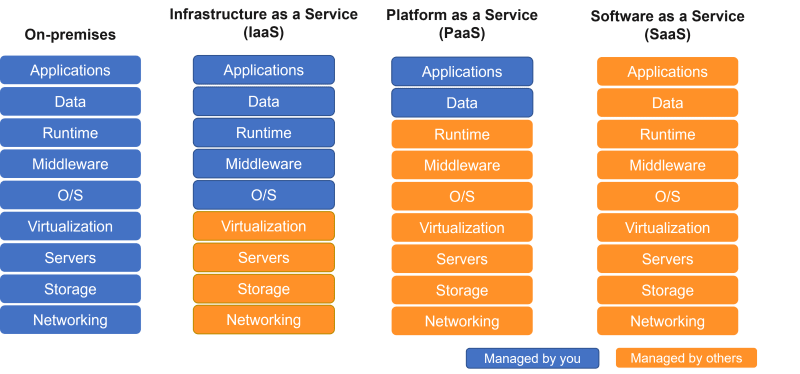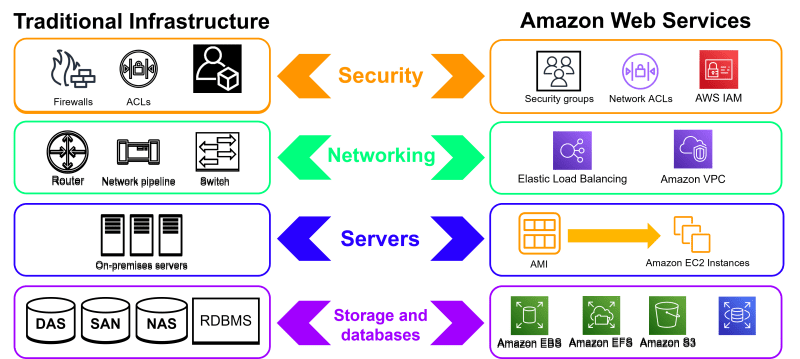Types of cloud computing
There are three main cloud service models. Each model represents a different part of the cloud computing stack and gives you a different level of control over your IT resources:
-
Infrastructure as a Service (IaaS) - Services in this category are the basic building blocks for cloud IT and typically provide you with access to networking features, computers (virtual or on dedicated hardware), and data storage space. IaaS provides you with the highest level of flexibility and management control over your IT resources. It is the most similar to existing IT resources that many IT departments and developers are familiar with today.

-
Platform as a Service (PaaS) - Services in this category reduce the need for you to manage the underlying infrastructure (usually hardware and operating systems) and enable you to focus on the deployment and management of your applications. Some examples of PaaS are: Amazon Web Services (AWS), Microsoft Azure, Google Cloud Platform, Heroku, OpenShift, Magento, AWS Elastic Beanstalk, and others. There's more example of Platform as a Services (PaaS). The example I've mentioned will be enough to get you an idea what's in the PaaS cloud computing.

-
Software as a Service (SaaS) - Services in this category provide you with a completed product that the service provider runs and manages. In most cases, software as a service refers to end-user applications. With a SaaS offering, you do not have to think about how the service is maintained or how the underlying infrastructure is managed. You need to think only about how you plan to use that particular piece of software. A common example of a SaaS application is web-based email, where you can send and receive email without managing feature additions to the email product or maintaining the servers and operating systems that the email program runs on. Some examples of SaaS are: Slack, Workday, ServiceNow, Salesforce, HubSpot, Office365, and others.

In summary, as cloud computing has grown in popularity, several different models and deployment strategies have emerged to help meet specific needs of different users. Each type of cloud service and deployment method provides you with different levels of control, flexibility, and management.

Cloud computing deployment models
- Cloud - A cloud-based application is fully deployed in the cloud, and all parts of the application run in the cloud. Applications in the cloud have either been created in the cloud or have been migrated from an existing infrastructure to take advantage of the benefits of cloud computing. Cloud-based applications can be built on low-level infrastructure pieces or they can use higher-level services that provide abstraction from the management, architecting, and scaling requirements of core infrastructure.
- On-premises/Private Cloud - The deployment of resources on-premises, using virtualization and resource management tools, is sometimes called the “private cloud.” On-premises deployment doesn’t provide many of the benefits of cloud computing but is sometimes sought for its ability to provide dedicated resources. In most cases this deployment model is the same as legacy IT infrastructure while using application management and virtualization technologies to try and increase resource utilization.
- Hybrid - A hybrid deployment is a way to connect infrastructure and applications between cloud-based resources and existing resources that are not located in the cloud. The most common method of hybrid deployment is between the cloud and existing on-premises infrastructure to extend, and grow, an organization's infrastructure into the cloud while connecting cloud resources to the internal system.
Traditional Infrastructure and Amazon Web Services (AWS)
There are many similarities between AWS and the traditional, on-premises IT space:
AWS security groups, network access control lists (network ACLs), and AWS Identity and Access Management (IAM) are similar to firewalls, access control lists (ACLs), and administrators.
Elastic Load Balancing and Amazon Virtual Private Cloud (Amazon VPC) are similar to routers, network pipelines, and switches.
Amazon Machine Images (AMIs) and Amazon Elastic Compute Cloud (Amazon EC2) instances are similar to on-premises servers.
Amazon Elastic Block Store (Amazon EBS), Amazon Elastic File System (Amazon EFS), Amazon Simple Storage Service (Amazon S3), and Amazon Relational Database Service (Amazon RDS) are similar to direct attached storage (DAS), storage area networks (SAN), network attached storage (NAS), and a relational database management service (RDBMS).



Top comments (0)